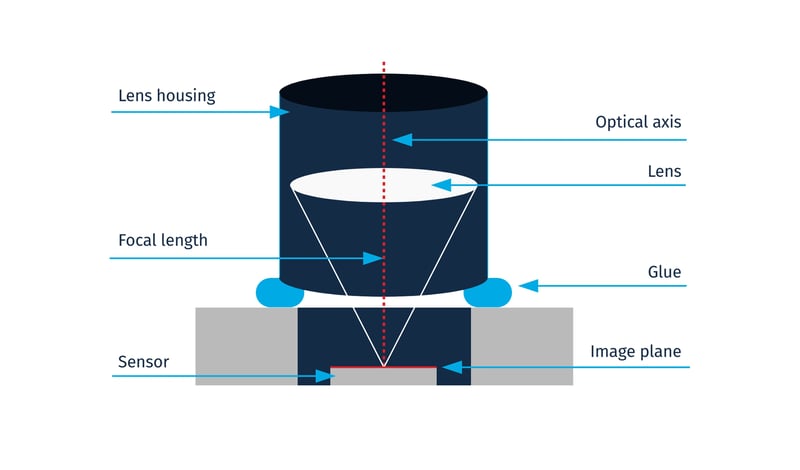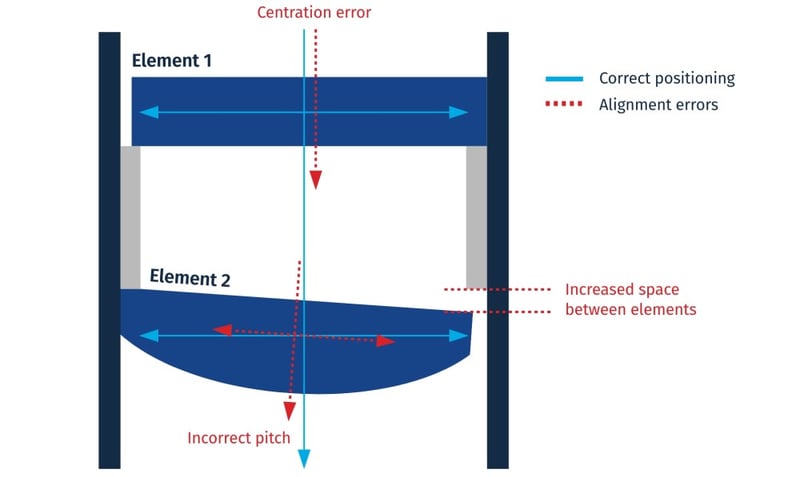As the need for accuracy and precision in sensor tech increases, active alignment is becoming an essential part of the lens manufacturing process. This article takes a closer look at why active alignment matters and how it is used to guarantee performance in sectors where product failure is not an option.
What is active alignment?
Active alignment is the process of mechanically positioning camera lens components in real time as products are being assembled. In micro-optic production it ensures high levels of precision and accuracy in imaging that a manual (or passive) process struggles to achieve.
Why lens manufacturing is so important
Robotic eyes are driving a new generation of IoT products that are changing the world. LIDAR and other micro-optic technologies are being used in a range of sectors including:
- Automotive
- Agritech
- Medical devices
- Telecomms
- Satellite engineering
- Defence engineering
- Access control
- Smart factories
The eyes of robots will help feed the world and keep us safe in a thousand different ways. And they will be used in all kinds of contexts and lighting conditions.
Why micro-optics are the future
As more AV (autonomous vehicles) take to our roads, it’s this technology that will take precise decisions about speed control and collision avoidance. Cameras on production lines will monitor quality and minimise waste, while cameras scanning fields of crops will direct robotic machinery to laser weeds and water arid ground.
Accuracy and clarity of imaging is key to support the advances in technology that will answer these and ever more complex use cases.
Why is it so difficult to manage micro-optic assembly?
Devices that use cameras are getting smaller, while lens specifications are getting more complex. Camera components need to be produced to ever tighter tolerances to achieve the right results.
As the diagram below shows all the parts of an assembly have to be precisely aligned based on their optical axis and be parallel if a lens is going to function as intended.

The next diagram shows what happens when one or more parts deviate from design dimensions (even by a fraction)

Variation in size of any part of an assembly including housing, spacers, or elements can result in misalignment that affects final performance. The results can be fuzzy, out-of-focus imaging - with poor contrast and resolution levels.
But producing miniature components to such tight tolerances and at scale is difficult. When multiple elements are involved, tolerance stacking becomes a huge risk.
Conventional, manual assembly processes will not produce consistent, quality results.
What approach should you take to ensure accuracy in micro-optic positioning?
Why choose passive alignment?
Passive alignment involves aligning components of an optical system manually. This process can be time-consuming and prone to human error, leading to decreased precision in the final results. It may be adequate for low-quality, mass-produced lenses, but not for more sophisticated assemblies where quality is imperative.
Why choose active alignment?
Active alignment is a more precise method for aligning components of an optical system. It uses lasers and imaging to precisely control the positioning of elements during assembly, adjusting micrometer screws as required, reducing human error and enabling highly accurate alignment.
The sophisticated machinery used in this process allows you to:
- Maintain tight control of optical properties
- Reduce variability in image equality
- Ensure focus across the entire image range
- Ensure customizable focal distance
- Reduce waste in the production process
- Increase manufacturing yield
But active alignment requires a significant tooling investment
Many of the applications that use LIDAR and other micro-optic technologies are operating at the very edge of what is possible and with the narrowest of tolerance for risk. The technology involved in Advanced Driver Assistance Systems (ADAS) for example, needs the highest level of dependability to function as intended - the images they produce need to precisely measure distances and identify hazards to protect lives. These standards cannot be compromised.
Active alignment machinery is expensive. But for OEMs looking to introduce cutting-edge micro-optic and LIDAR technology into their products, it is the only way to ensure the required quality as you move to production.
OEMs who have been developing prototypes manually may not appreciate the headache that optical alignment could become later down line. However, when faced with the challenge of scaling the production levels of these complex components, the problem may become all too obvious.
Finding partners who have the skills and machinery to assemble these products is vital. But it’s worth appreciating the complexity of the processes involved as you plan your outsourcing budget and manage internal expectations around delivery.


